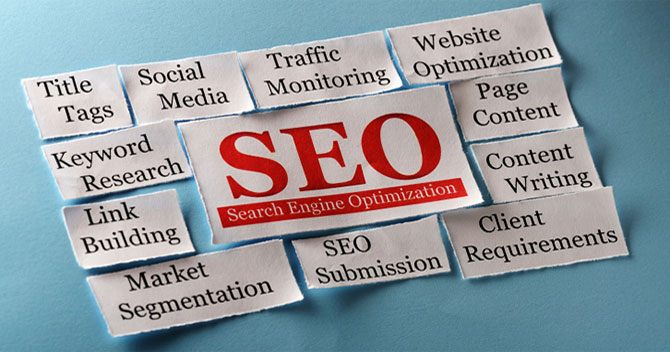Best Practices for On-page Website Optimization
SEO can be broken down into two distinct categories: on-page and off-page optimization – both sharing the common goal of improving your website’s ranking in the search engine results. On-page optimization refers to those SEO techniques performed directly on your web pages to improve and enhance their visibility to the search engines, while off-page optimization is focused on those factors external to your web pages such as citations, inbound backlinks and social media signals.
When initiating an SEO campaign for a new website, on-page optimization is typically performed first. Without properly optimized web pages, the value of any off-page optimization is greatly diluted and is generally a wasted effort. Many webmasters have been able to rank their sites in the search results solely with on-page optimization, adding off-page techniques to improve their ranking position as time and budget permits.
1. Start with Basic Keyword Research
A targeted list of action keywords is the starting point for any successful SEO campaign, off-page or on-page. Brainstorm a list of potential keywords worth ranking for by drawing from your existing marketing material and published content, as well as from the words used to describe your products and services. A keyword tool, such as Google’s Keyword Planner can help you expand your list of possible keywords.
Once you’ve exhausted the possibilities, you’ll need to prune your list to no more than 150 possible keywords. Focus on those keywords most likely to drive the highest numbers of targeted traffic to your pages.
- Remove any keywords that aren’t directly related to your products or to the search terms your prospects are likely to use.
- Sort your keyword list by search volume and amount of competition. You want to find that sweet spot of keywords that have high search volume yet aren’t so competitive that you’ll have a hard time ranking for them.
- Analyze the keywords that your direct competitors are using, and determine how well they are ranking for them.
- Be sure to focus on your SEO competitors. These are the companies that are competing with your for your targeted keywords, and may not be the same as your business competitors – who are competing with you for customers.
2. Optimize Your Title Tags
A correctly optimized title tag is one of the most important on-page SEO factors. Title tags are used to tell the search engines what your page is all about and why it is relevant for a given search term. Format your title tags with primary keyword first, followed by your secondary keyword, and ending with your brand name. Example: primary – secondary | brand name. Keep your title tags below 55 characters, including spaces.
3. Write Compelling Meta Descriptions
Meta descriptions are primarily for the benefit of the search engine user, encouraging them to click on your listing in the search results. Write a compelling description of what a user would find by clicking through to your site. Meta descriptions should be between 150 and 160 characters in length.
4. Create Header Tags
Also known as an H1 tag, a header tag should be added to those pages that you wish to drive unique traffic to. Your keyword should be used once per tag. If you have multiple sections, use an H2 tag for second headers.
5. Create an Alt Tag for Each Image on Your Web Pages
Search engines cannot view images the way the human eye can, so alt image tags are necessary for the search bots to understand your images. Write an accurate description for each of your images, and include your keyword wherever possible.
6. Create Internal Site Links
By linking to other relevant pages on your site using keyword anchor text, you enhance overall site navigability as well as remind the search engines that your page is relevant for that particular keyword.










